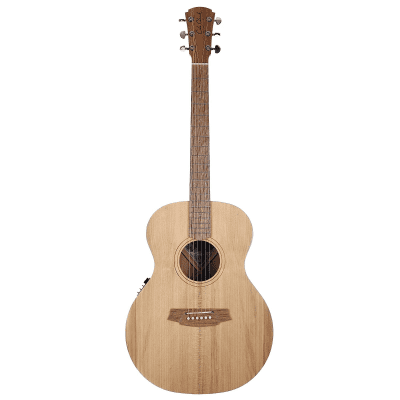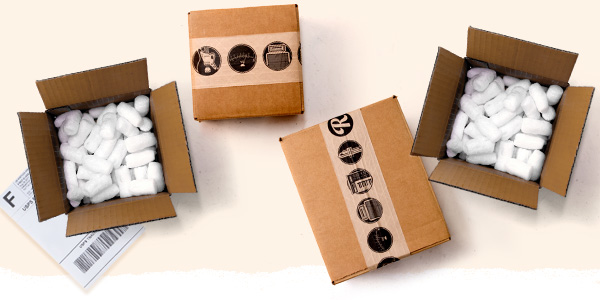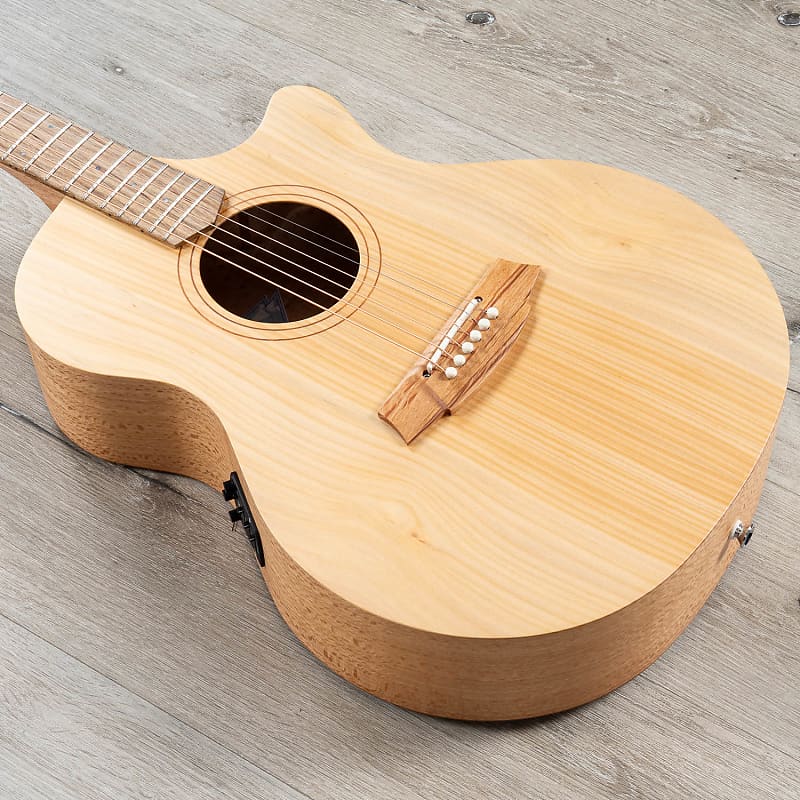

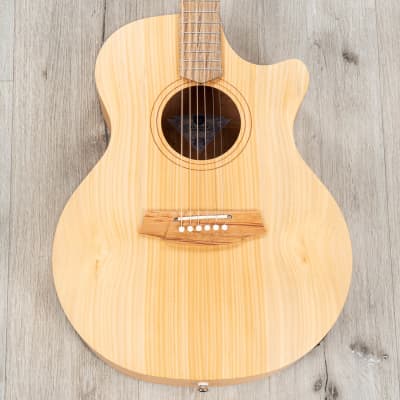
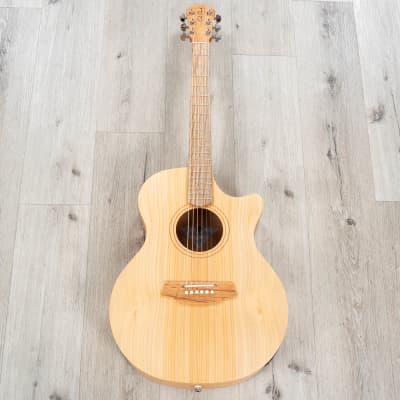
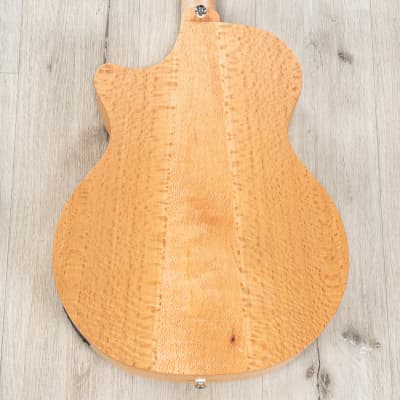
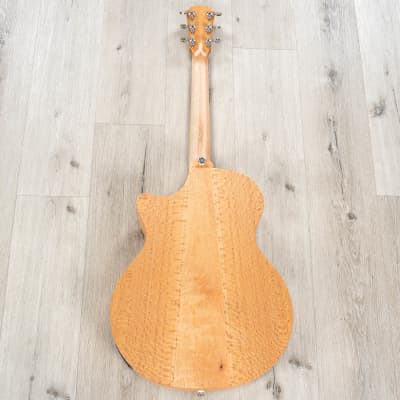
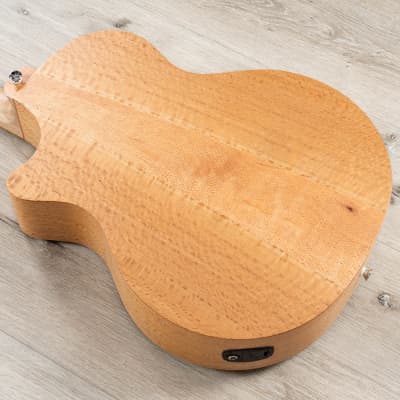
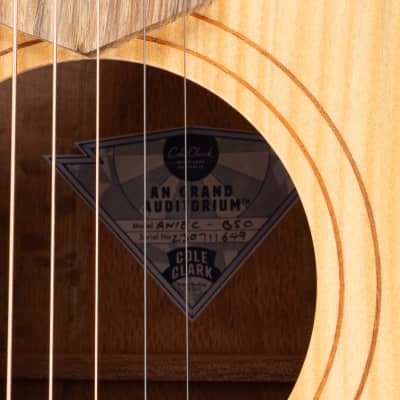
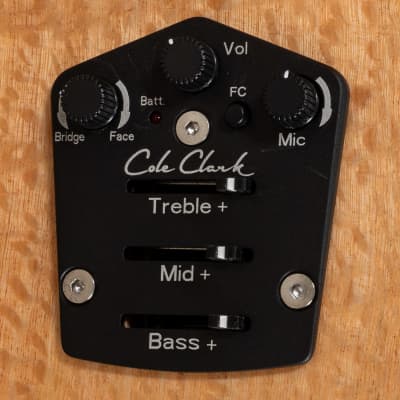
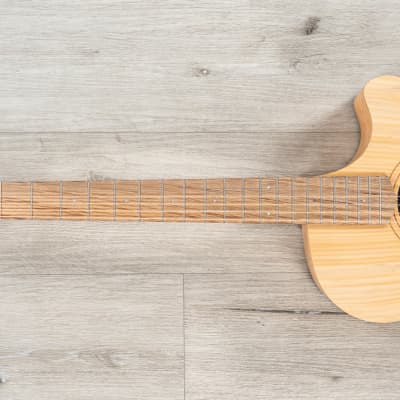
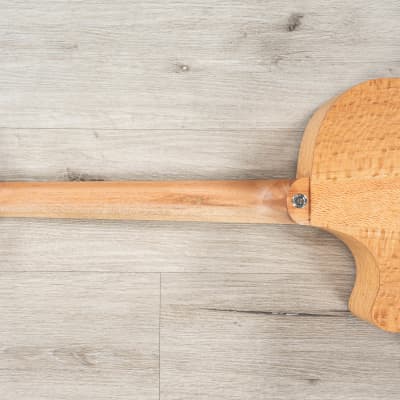
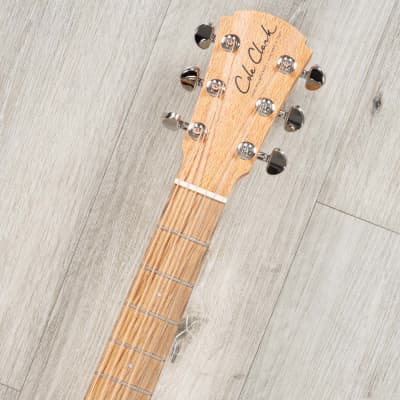
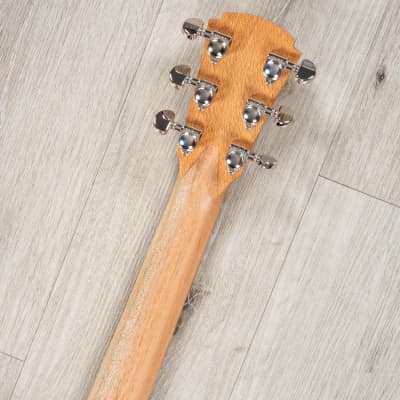
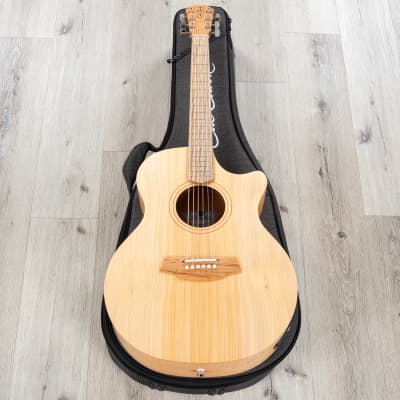
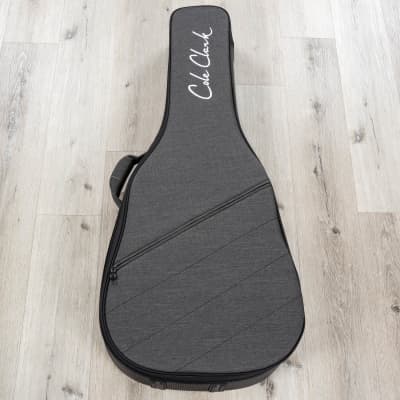
As we strolled around the Anaheim Convention Center one year at NAMM, we found ourselves gravitating to this acoustic guitar booth that was just pumping out some of the clearest, nicest, and lushest sounds we had heard coming from an acoustic plugged in through a PA system. It didn't take long before we decided to become official Cole Clark dealers.
The gist of their company is a simple one: Most acoustic-electric guitars have a preamp that is built around the guitar. At Cole Clark, they make guitars that are built around their preamp. So if you're the type of player that always performs with your guitar plugged in, then why not have a guitar that sounds it's best in that scenario, right?
It's not that Cole Clark aren't interested in how their guitars sound acoustically. They very much are. These guitars sound great unplugged. They are loud and bright while retaining some nice warmth to them as well. The Bunya top is quite snappy and it projects really well. You can really dig in and strum your strings hard and the guitar can take everything you throw at it without feeling like things are getting unwieldy. It's definitely a tonal combination that's meant to stand out. It's perfect if you play in an electric band with other instruments and you don't want the guitar to get buried in the background.
But building a guitar that sounds great acoustically has never been their end goal. That's just the beginning. They want to build a guitar that sounds great coming through the PA system or the amplifier that you're likely to plug it into if you're performing on stage, in a studio, or just jamming with some other buddies. So the real magic of these guitars is not in the exotic tonewoods that they used, although they look and sound beautiful. The magic in the sound comes from the unbelievable preamp that they've built this instrument around that is unlike anything else out there on the market. It's really 3 microphones or pickups combining to give you one cohesive sound that is extremely tweakable.
The playability, fretwork, and general fit-and-finish construction of this guitar are really thoroughly impressive. The neck is slim and super comfortable to play. It's a true, hand-made work of art, that feels effortless to play and will sound like a choir of angels coming out of your speakers. It's truly a guitar built by musicians for musicians. There's good reason why some of their top endorsers are discerning players who are on the road and need to get a good amplified sound out of their acoustic guitar. Some names that'll likely ring a bell who rely on Cole Clark guitars are Jack Johnson, Ben Harper, Johnny Marr, and The Mars Volta, to name a few.
We're pretty sure you'll be as blown away by these as we were.
The Cole Clark pickup is not an afterthought installed at the end of the production line. We build our system into the guitar as it goes through production. The concept behind our pickup is best explained by comparing it to an audio system. A P.A has subwoofers, speakers, and horns, each designed to hear a range of frequencies they are best equipped to handle and crossover points for frequencies best heard by the next component. Cole Clark uses the same 3 component philosophy with a piezo system for the bottom end, a patented face sensor for the mid-range and a microphone for the top end. All Cole Clark pickups and preamps are proudly made in Melbourne, Australia.
Our most popular preamp, the analog 3-way is the ‘Cole Clark sound’ heard the world over.
The Piezo system utilizes individual piezo elements suspended under the bridge saddle which we believe is the best and most dynamic type of piezo system available.
We know that the face/top is the most important component to the sound of an acoustic guitar, so it makes sense that we utilize that tone when amplifying the guitar. We do this with our unique face sensor which is specifically designed for the mid-range. We use a patented blend control which blends in the amount of face sensor required to go with the piezo sound or to completely replace the piezo in the mid-range. This goes a long way in removing the ‘piezo quack’, delivering a more natural tone. With a maximum crossover point of 350hz, the face sensor cannot hear any frequency in its feedback zone, instead, leaving those frequencies to the under saddle piezo.
The third element is a condenser microphone for the top end. This microphone is set well above any feedback zone and is purely there to take the ‘ping’ out of the piezo if there is some piezo blended through at full range.
- All solid timber cut-away grand auditorium with internally carved top and back
- Made entirely from sustainable timbers
- Finish: Nitrocellulose (natural satin)
- Top: Bunya
- Back/Sides: A grade Silky Oak
- Inlaid timber rosette
- Neck: Queensland Maple
- Bridge/Fretboard: She Oak
- Inlays: Dot
- Nut/Saddle: Graph Tech Tusq
- Nut Width: 44mm/1.73″
- Radius: 12″
- Scale length: 25.5″
- Machine Heads: Grover
- Cole Clark PG3 pickup system
- Strings: Phosphor Bronze 12-53
- Cole Clark heavy duty gig bag – Grey
The above photos may not be of the exact guitar you'll receive. Figured tops, serial numbers, and instrument weights may differ. Please feel free to reach out for these and other in-hand details.
| Condition | Brand New (New) Brand New items are sold by an authorized dealer or original builder and include all original packaging.Learn more |
| Brand | |
| Model |
|
| Categories | |
| Pickup |
|
| String Type |
|
| Right / Left Handed |
|
| Number of Strings |
|
| Body Shape |
|
| Active Preamp |
|
| Number of Frets |
|

